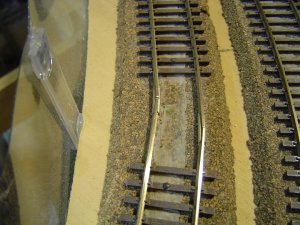N-gager
Member
I recieved a Kato Sd90/43mac I'd ordered the other day. Tested it on the layout and I consistantly jumps track on two different curves. None of my other 3 engines have an issue with the layout (Bachman 40ax).
To further confuse, I can find nothing wrong with the track AND this only happens in a clock-wise direction. The Kato runs great otherwise (counter-clockwise w engine turned forward and backward - if that makes sense to you).
Everything on the engine looks good.
I've checked clearance, smoothness, looked for obstructions, even ground down the rail joiners in the suspect area even with the inside rails.
The one section of track IS ballasted but I've checked for problems with clearance. The other curve is not ballasted yet.
What am I missing here????
To further confuse, I can find nothing wrong with the track AND this only happens in a clock-wise direction. The Kato runs great otherwise (counter-clockwise w engine turned forward and backward - if that makes sense to you).
Everything on the engine looks good.
I've checked clearance, smoothness, looked for obstructions, even ground down the rail joiners in the suspect area even with the inside rails.
The one section of track IS ballasted but I've checked for problems with clearance. The other curve is not ballasted yet.
What am I missing here????


